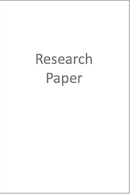Defines the servicescape
Welcome to the Library
Hello. Why don’t you pull up one of those nice comfy chairs. Go on, settle yourself down in front of the crackling fire, with a good cup of tea (or coffee, or something stronger, the choice is yours).
This is my virtual library where I list the books and articles that have sparked my interest and thoughts. I’m not intending to give a detailed review of these books. Rather, just to highlight points of interest.
If you’re looking for the list of references, then you should try here.
I hope you find the items in the library as interesting and thought inspiring as I have! If you’ve got any comments or suggestions of other books and articles, please let me know!
Defines the servicescape
Vandermerwe, S., Rada, J. (1988)
Defines the term "servitization" and gives a (non-exhaustive) view of why servitization happens.
Valente, T. (1996)
Spohrer, J. & Maglio, P. & Bailey, J., Gruhl, D. (2007)
service system = system in which entities exchange performance of beneficial action And that a service system can be understood as a system composed of people and technologies that adaptively computes and adjusts to the changing value of knowledge in the system
Covin, J., Slevin, D. (1989)
Defines the Covin/Slevin questionnaire for determining Entrepreneurial Orientation of a firm. Used in article: Increasing The Innovativeness Of Organisations
Amongst other things, a list of customer resources that can be brought to the table informational resources; emotional resources; physical resources; financial resources; temporal resources; behavioral resources; relational resources; social resources; cultural resources; role-related resources (role size, role awareness and role clarity); customer ability; and customer willingness.
Larry Keeley, L., Walters, H., Pikkel, R., Quinn, B. (2013)
Christensen, C. (2016)
Cornescua, V., Adam, C-R. (2013)
Goudin, P. (2016)








